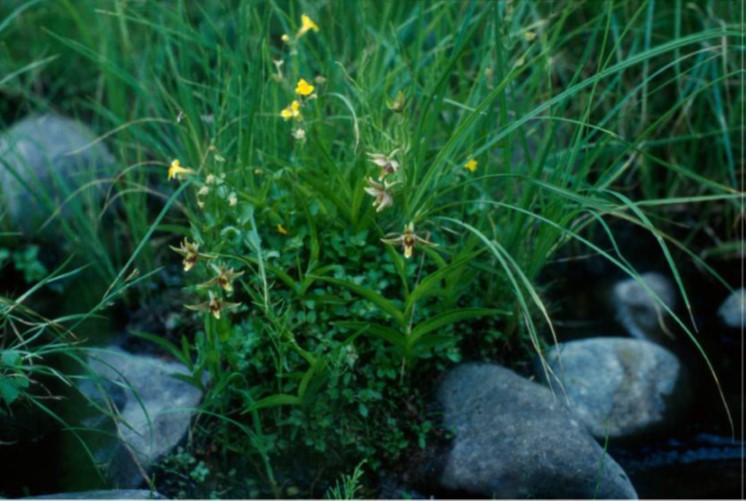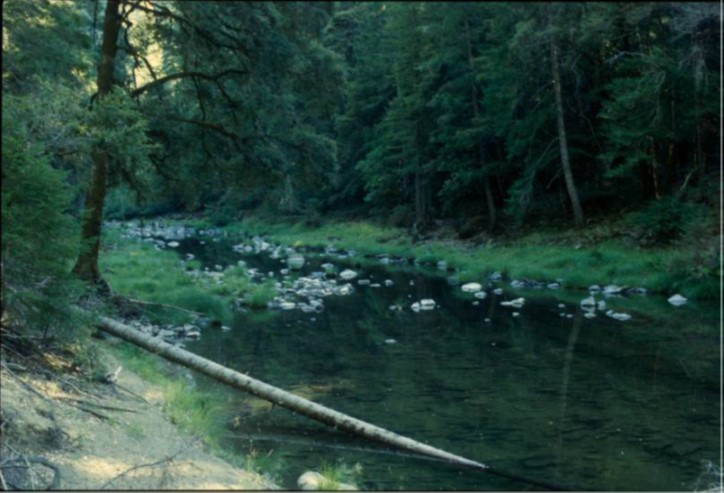In 2000, Jonathan Levine published a paper in Science reporting the results of a field experiment that showed that the impact of species diversity on invasive diversity depends on spatial scale. At small scales, the removal of species reduces invasion resistance, but at community-wide scales, the more diverse a community is the more likely it is to be invaded. Sixteen years after the paper was published, I asked Jonathan Levine about his motivation to do this study, memories of field work, and what we have learnt since about the impact of diversity on invasion resistance.
Citation: Levine, J. M. (2000). Species diversity and biological invasions: relating local process to community pattern. Science, 288(5467), 852-854.
Date of interview: Questions sent by email on 6th September, 2016; responses received by email on 11th October, 2016.
Hari Sridhar: Correct me if I’m wrong, but this paper seems to have formed part of your PhD thesis. Could you tell us what was the motivation behind this specific piece of work, in relation to the rest of your PhD? Stepping back a little, how did you get interested in the topic of species diversity and biological invasions in the first place?
Jonathan Levine: Yes, the paper was part of my dissertation. I had already been working in the riparian sedge “island” study system for a year and a half, but I wasn’t sure what I really wanted to study. During a graduate seminar on biological invasions at Berkeley, I began thinking about the evidence relating species diversity to invasion success. It was clear even then that most of the evidence on how species diversity affected biological invasions was being inferred from observational patterns that could not reveal the causal effects of diversity. Meanwhile, the very controlled experiments in progress elsewhere would be good at isolating causal mechanisms but less than ideal for relating these results to the patterns one would see in nature. I came to realize that my sedge system would provide a good habitat in which to sort out these relationships at various spatial scales.
HS: If you don’t mind my asking, how come your PhD supervisor(s) weren’t authors on this paper?
JL: To their credit, my advisors, Carla D’Antonio and Wayne Sousa, did not expect authorship if students in their groups worked truly independently, which I believe I did.
HS: How did you pick the South Fork Eel River to do this work? When did you first realise that Carex nudata tussocks might be a suitable system to study diversity-invasibility relationships?
JL: The field site was one of the University of California’s reserves, and when I started my PhD, I visited a number of these reserves to look for field sites. When I got there, I observed interesting sedge islands that served as habitat for a number of other perennial, vegetatively reproducing plants in the river channel. I did not know what I would do with them, but the numerous replicate islands composed of easily manipulated plants seemed like a promising start. I sometimes hear that people like this study because of the excellent match of the sedge islands to the questions, but it took over 18 months of working in the habitat for this connection to cross my mind.

HS: Could you give us a sense of what your daily routine was during the fieldwork for this study – where did you stay? How did you commute? Who were the people who helped you with fieldwork? etc.
JL: The reserve was three and half hours from Berkeley and had really nice housing, so I would drive up and stay for a week or so at a time, starting in May, and finishing in September. I always had an undergraduate field assistant and occasionally two, thanks to funding from UC Berkeley’s programs to support undergraduate research. These students were stars- all of them went on to top graduate programs, and one is now an ecology professor. We did long days of field work, but it was beautiful and generally fun.

HS: Do you continue to work in this site till today? When was the last time you visited this site? In what ways has the site changed since the time you worked there for this study? How has the invasion of your three species of interest progressed since the time of the study?
JL: I am somewhat embarrassed to say that I have never been back since I finished my dissertation field work in 2000. I have heard though from friends that the river channel and most of my sites underwent rapid succession to alders, which effectively eliminated many of the sedge islands. So had I showed up for this project today, I am not sure it could be done.
HS: How long did the writing of this paper take? When and where did you do most of the writing? You list a number of people who commented on the manuscript – could you tell us who these people were and how you knew them at that time?
JL: I cannot really remember how long it took to write up the paper but it must have been a month or so, and I wrote it at Berkeley. I got comments from my advisors and lab-mates at Berkeley as well as my summer assistants- nothing out of the ordinary.
HS: Did this paper have a relatively smooth ride through peer-review? Was Science the first place this was submitted to?
JL: Yes, Science was the first journal I sent it to, and I think it was among smoothest reviews I have had.
HS: What kind of attention did this paper receive when it was published?
JL: I think it got a few internet news stories but not much.
HS: What kind of impact did this paper have on your career and the future course of your research?
JL: I certainly think it helped me get faculty offers early in my career. My future work did not build directly on the diversity-invasion questions, but as my research began to emphasize questions about species coexistence, there must have been subconscious connections.
HS: Today, 16 years after it was published, would you say that the main findings still hold true, more-or-less?
JL: Yes, I think so. Since the time of publication, we have only seen even stronger evidence that species diversity reduces invasion success in manipulative experiments, while at the same time, does not causally drive the positive associations between native diversity and invasion often seen in observational studies.
HS: This paper has been cited over 900 times. At the time of the study, did you anticipate at all that it would have such a big impact? Would you know what is it mostly cited for?
JL: I did have a sense that the topic would attract the attention of both those studying biological invasions and those studying biodiversity effects on ecosystem function- two large communities. I do not know what it is mostly cited for, but like many highly cited papers, I suspect it is often cited for very generic reasons- general statements about invasions or species diversity rather than the actual findings of the study.
HS: Subsequent to this study, have we learnt more about the specific mechanisms through which diversity affects invasibility in experimentally-modified communities?
JL: To some extent, yes. There have been some good mechanistic studies crossing manipulations of species diversity, with manipulations of limiting resources or fungal mutualists showing that these factors can regulate the ways diversity affects invasion success.
HS: You say “Further investigation of these covarying factors is critical, as they may be responsible for the relatively high frequency of invasions into naturally diverse systems”. Subsequent to this study, were these covarying factors studied further?
JL: In the original Science paper, I hypothesize that the diversity-invasion patterns are driven by the biased dispersal in river systems, and in subsequent work I evaluated the efficacy of wind and water dispersal in the system, and built models to evaluate this mechanism. Still, it is very difficult to evaluate this hypothesis in a satisfyingly rigorous way, so I still view it as a hypothesis as it applies to my system.
HS: In the concluding lines of your sentence you say “most diverse assemblages might be at the greatest risk of invasion” and “loss of species, if they affect neighbourhood-scale diversity, may erode invasion resistance”. Were these statements borne out by future evidence?
JL: I do not know of studies that have followed species loss through time and explored changes invasion success. Nor are there many studies that predict patterns of invasion before the arrival of the invaders, so those statements from the paper probably still lack proper tests.
HS: Have you ever read this paper after it was published? If yes, in what context?
JL: Yes, I was curious if I would still like it.
HS: Would you count this paper as a favorite, among all the papers you have written?
JL: Yes
HS: What would you say to a student who is about to read this paper today? What should he or she take away from this paper written 16 years ago? Would you add any caveats?
JL: I think it is nice example of how a PhD student can do independent research that competes with that of the heavy-weights in the field without large grants and a large team of researchers. Good knowledge of the literature, a tractable field system, and a clever study design get one most of the way.